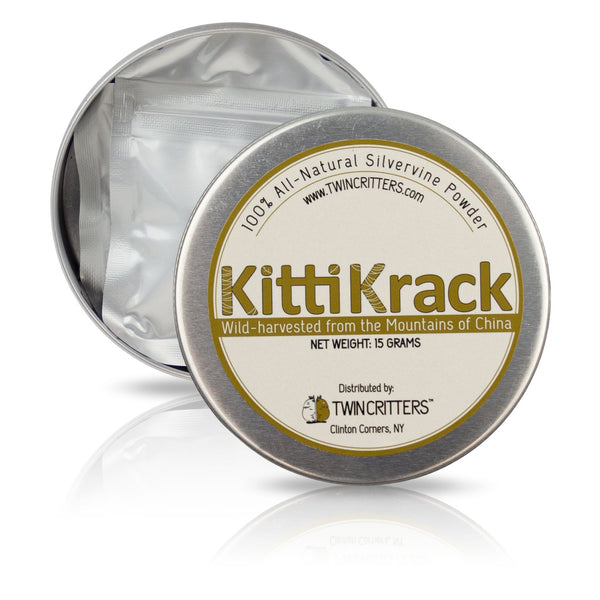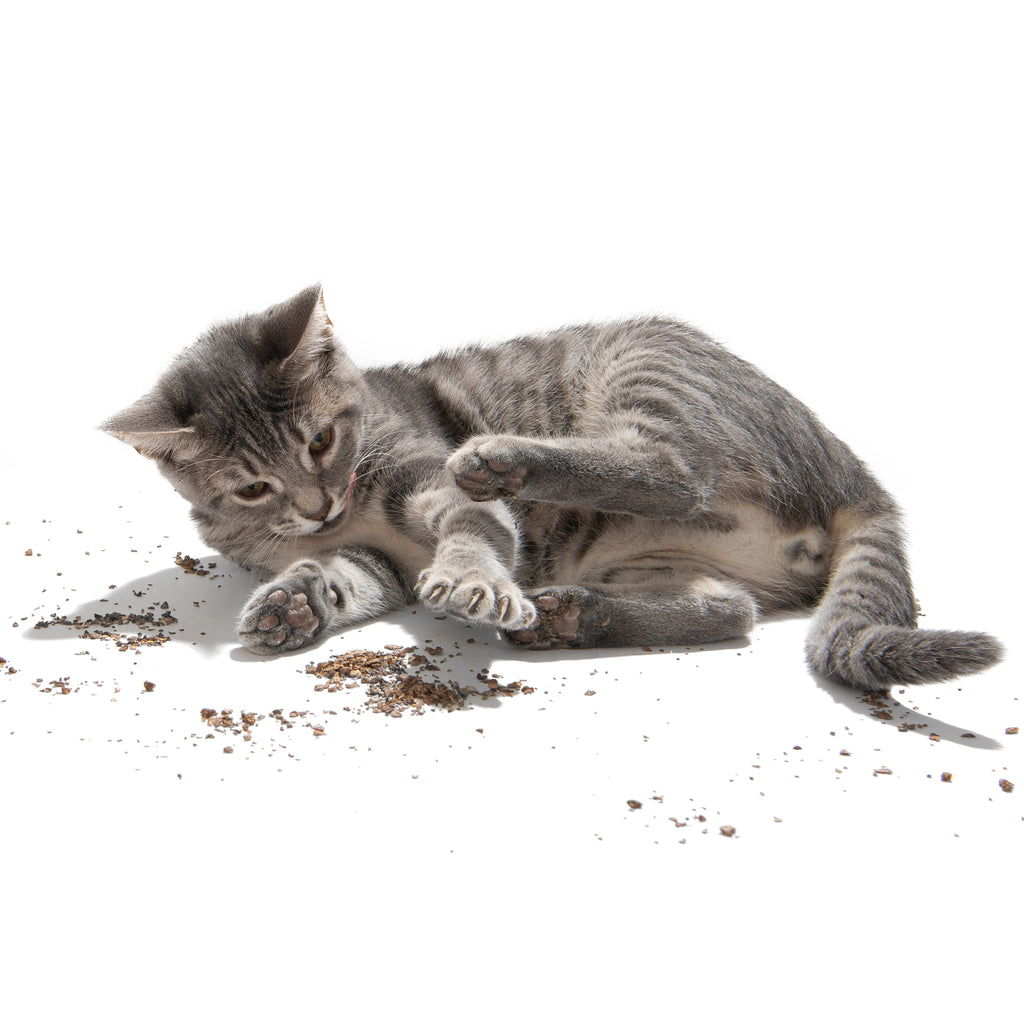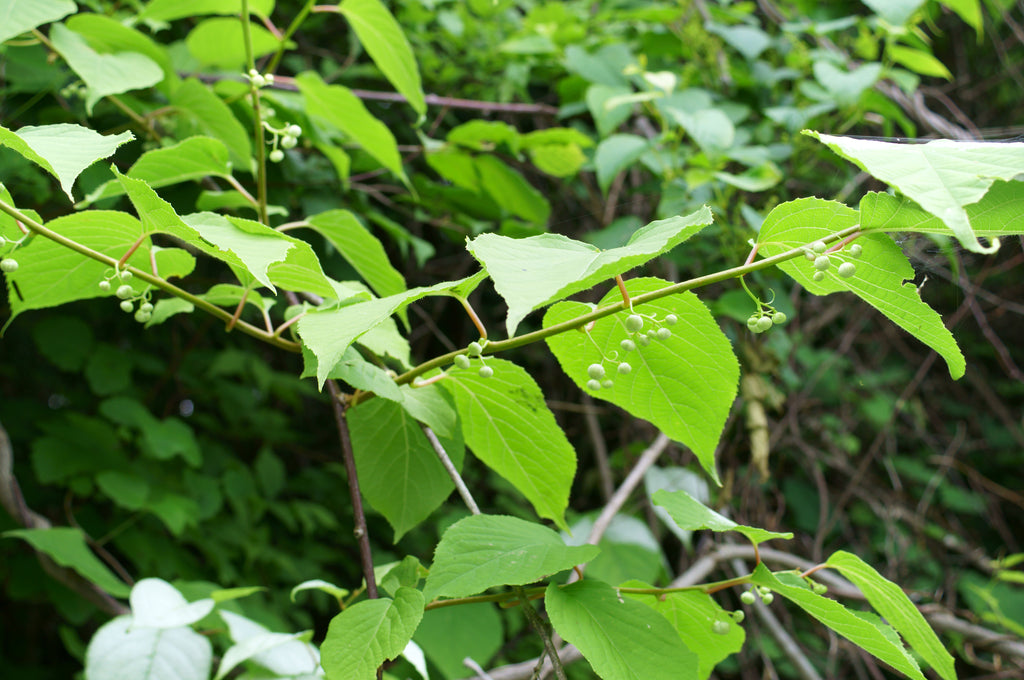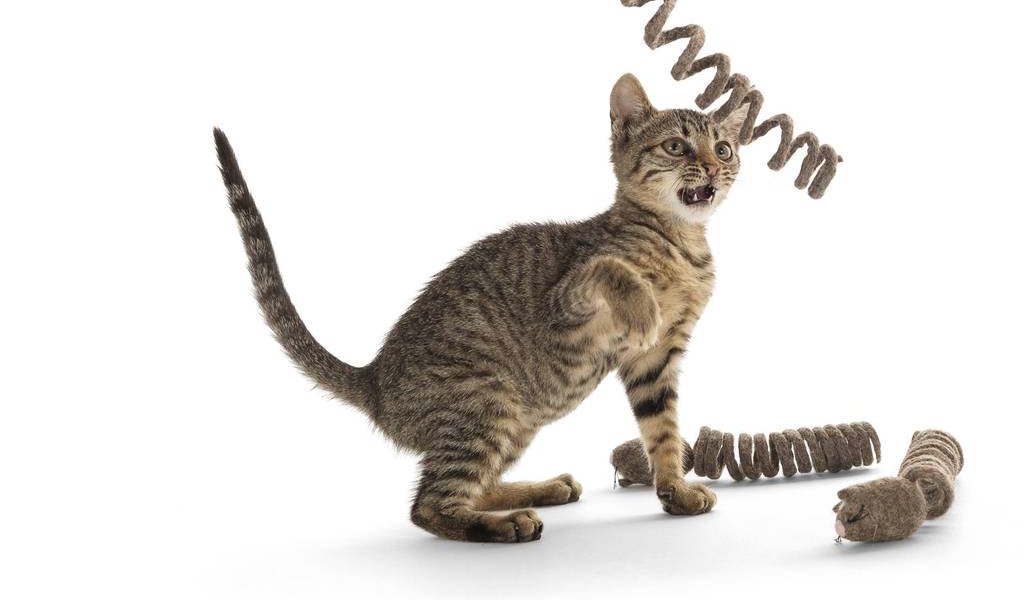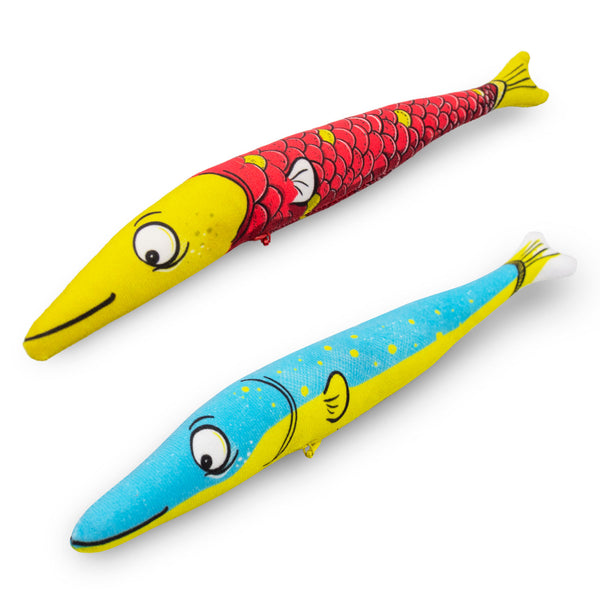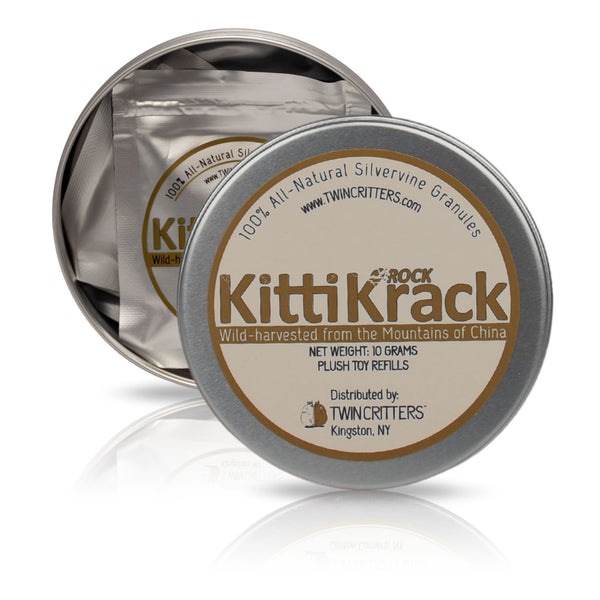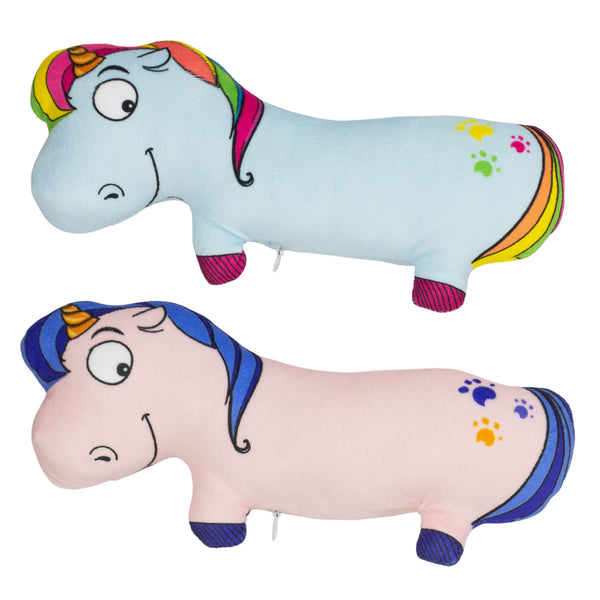The Science Behind Silvervine: An All-Natural Catnip Alternative That More Cats Adore
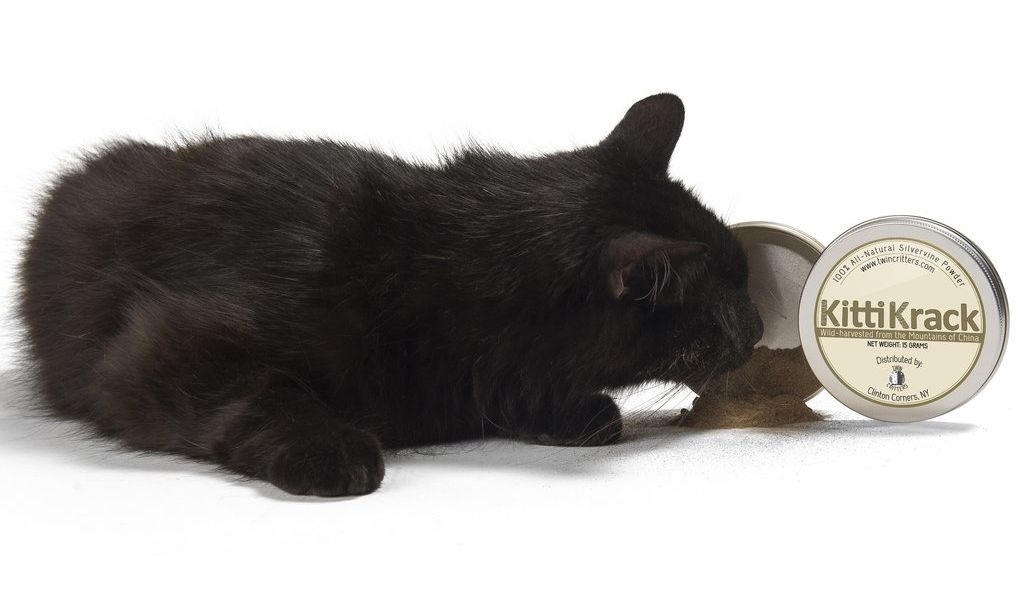
When you love your cats like we do, you’re constantly on the lookout for new ways to pamper and entertain them. From beds and perches to treats and toys, there are a million different ways to spoil your kitty.
Catnip is one of the most popular ways to help your cat relax and keep them amused. It contains an attractant called nepetalactone.. For some cats, catnip sedates them and puts them into a euphoric state. Your furry friend may lazily roll around on the floor and bat at their toys, or they may become wild-eyed and hyper and zoom around the room. For other kitties, catnip has little to no effect at all.
If your cat isn’t affected by catnip, they aren’t alone! Only about 50 percent of felines show signs of being reactive to nepetalactone. For cats that simply shrug and don’t seem interested in catnip, or simply want to try something new, there is an alternative. A substance known as silvervine creates the same effects as catnip – and may be even more effective at inducing a euphoric state.
What is Silvervine?
Silvervine (Actinidia polygama) is a climbing plant found in the mountainous regions of China and Japan. There, it’s also known as “Matatabi” or “Japanese catnip.” It bears kiwi-like fruit, but it’s not the fruit that gives the plant its name. Silvervine is named for the beautiful silver-white leaves and flowers that blossom off of the fast-growing vine.
In addition to being used in traditional Chinese and Japanese medicine, the fruit, leaves, buds, and stems of silvervine drive cats absolutely wild. They adore it so much that a 1939 article for Harvard University’s Arnold Arboretum describes having several plants in their collection “literally chewed to death” by felines that were able to access them (Wyman 34).
How Does Silvervine Affect Cats?
This attraction makes silvervine a particularly enticing cat treat. Once it’s been dried and ground into a light brown powder, you’ll find that silvervine has a sweet, pungent smell. Like catnip, silvervine has an immediate effect on many cats. When exposed to it, they’ll often roll on the floor, rub their chins and faces on nearby surfaces, drool, and lick. Although silvervine isn’t particularly well-known in the Western world, it’s one of the most popular cat treats in Asia. Silvervine is so popular in Japan and China, in fact, that a cat’s reaction to it is known there as the “Matatabi Dance.”
Although silvervine does produce a kind of kitty “high,” you don’t have to worry about your cat becoming addicted or overdosing on it. In fact, Dr. Charles Abramson pointed out in a 2012 study that “no scientific data exists demonstrating any purported addictive properties of silvervine” (Abramson 21). The effects will wear off in less than 30 minutes and your cat will return to their normal behavior.
Catnip Vs. Silvervine
When it comes to hallucinogenic kitty treats, catnip is much more familiar in the Western part of the world. How does silvervine measure up? In 2017, researchers decided to find out. They tested 100 domestic cats to determine their response to valerian root, Tatarian honeysuckle, catnip, and silvervine. The results, published in BMC Veterinary Research, revealed that while one out of every three cats had no response to catnip, nearly 80% of the cats responded to silvervine.
In addition to affecting a greater number of cats, silvervine appears to be more potent than catnip. This is likely because instead of the single attractant contained in catnip (nepetalactone), silvervine has at least two olfactory attractants: actinidine and dihydroactinidiolide.
This is exciting news for cat owners whose fuzzy companions don’t care for catnip. Silvervine also presents an opportunity for people to change things up and provide variety for catnip fans who may have grown tired of the same old toys and treats.
How to Use Silvervine
From exercise to environmental enrichment, pet owners are finding that silvervine is the perfect way to get a lounging cat up and moving. This is helpful if you’ve got an older or overweight cat that needs to lose a few pounds. In his study, Dr. Abramson discussed the usefulness of silvervine as an environmental enrichment aid. He points out that these kinds of tools can help improve animal-human interactions and are also frequently “used by veterinarians to improve the physiological well-being of sick animals such as those suffering from arthritis and obesity” (Abramson 21).
Silvervine is fantastic for entertaining and exercising your cat, but it’s also an excellent all-natural substance for helping calm a fearful or stressed-out kitty. To use it, simply sprinkle a small amount (approximately 0.5 grams or 1/4 of a teaspoon) on the floor, your cat’s bed, on their scratching post. You might also roll their favorite toy in the powder, toss it down, and watch them go! Silvervine can also be used to attract your cat to a new bed or cat carrier in order to get them comfortable with it.
Although silvervine is safe for all felines from young kittens to elderly cats, it’s always a good idea to supervise your kitty while they enjoy their silvervine powder or toy. Limit playtime to 30 minutes and then put the product away. Some cats will become less reactive to silvervine over time; if this happens, you might limit their exposure to the product to two or three times weekly.
Where Can I Buy Silvervine?
Silvervine is the only ingredient in TwinCritters’ KittiKrack – a top-selling catnip alternative. This all-natural product is 100% silvervine powder made from wild silvervine fruit and contains no additives or preservatives. Try it to entertain your kitty, help them de-stress, or boost their mood.
We have a feeling that pretty soon, your cat will come running at the first whiff of KittiKrack. If your cat doesn’t like KittiKrack, however, or if you have any issues with the product, let us know within 30 days and we’ll gladly exchange or refund your purchase.
Catnip vs Silvervine: What’s the Difference?
| Catnip | Silvervine | |
| Scientific name | Nepeta cataria | Actinidia polygama |
| Nicknames | Catswort, catmint | Japanese catnip, Matatabi |
| Grows in | Asia, Africa, Europe, and the U.S. | Mountainous regions of China and Japan |
| Plant type | Herbaceous plant | Fast-growing, fruit-bearing vine |
| Feline attractants | Nepetalactone | Actinide, dihydroactinidiolide |
| Effect on cats | Sedation, hyperactivity, playfulness, rolling, drooling, and licking | Similar to catnip |
| Cat affection ratio | 60% | 80% |
References
- Abramson, Charles, et al. “The Use of Silver Vine (Actinidia Polygama Maxim, Family Actinidiaceae) as an Enrichment Aid for Felines: Issues and Prospects.” American Journal of Animal and Veterinary Sciences. vol. 7, no. 1, 2012, pp. 21-27.
- Bol, Sebastian, et al. “Responsiveness of cats (Felidae) to silver vine (Actinidia polygama), Tatarian honeysuckle (Lonicera tatarica), valerian (Valeriana officinalis) and catnip (Nepeta cataria).” BMC Veterinary Research. vol 13, no 70, 2017, pp. 1-15.
- Wyman, Donald. “Some Twining Vines.” Arnold Arboretum Harvard University: Bulletin of Popular Information. series 4, vol. 7, 1939, pp. 33-36.


